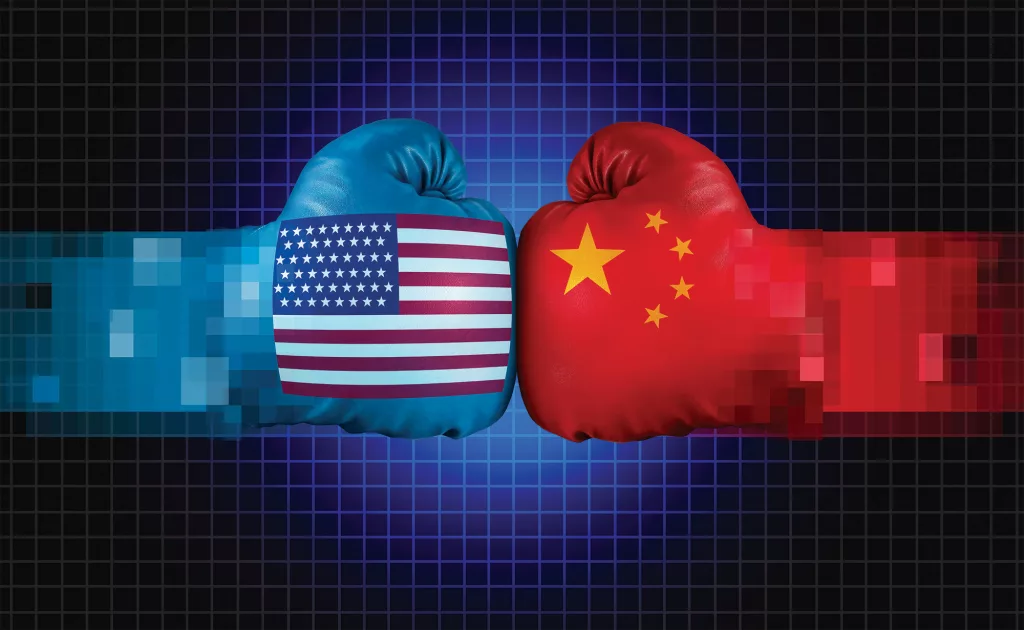Otaviano Canuto: The Global War of Subsidies
US bids to limit tech imports and exports send a message of frustration and fear.
Prior to her visit to China on April 4 — her second in nine months — Janet Yellen, US Secretary of the Treasury, sent a message demanding that the country not flood the world with cheap exports of clean energy.
That would “distort global markets and harm workers abroad”, she said. Yellen is not the only official from other major economies who has referred to a potential deluge of Chinese products.
China’s excess industrial capacity, and the government support that has fuelled it, were the subject of discussion during Yellen’s meeting with Chinese Premier Li Qiang.
Current levels of idle capacity and consumer restraint are some of the challenges China must address. Exports may be the way to address domestic demand issues, and the world monitors the Chinese exchange rate for signs of devaluation.

Xi Jinping has referred to clean energy and other tech sectors as the primary path to prosperity. China is ahead of the US and Europe when it comes to clean energy. Little wonder, then, that American and European officials make frequent reference to Chinese exports and subsidies.
Large-scale subsidies have proliferated in a race to subsidise strategic sectors. In response, the US has put its own subsidies in place for the local manufacture of clean-energy and semiconductor products. Volkswagen called this “a gold rush” when announcing a decision to build an electric vehicle (EV) factory in South Carolina.
On the basis that it is supporting investments to combat climate change and reduce healthcare costs, US subsidies take the form of tax incentives, grants, and loan guarantees to bolster domestic manufacturing. While many are available for investment in countries with which the US has free-trade agreements, their scope and value are lower than those available to companies in-country.
The CHIPS Act aims to revive the local semiconductor industry. The US leads the sector in terms of core technology and equipment, but mass production of occurs mostly in Taiwan, South Korea, Japan, and the Netherlands. The law aims to reduce dependence on Taiwan in the event of a crisis there. Expenditures on the Inflation Reduction Act (IRA) alone are expected to reach $1.2tn.
The EU has expressed almost immediate concern about the Act, with protests focused on strengthening US domestic production. European Commission president Ursula von der Leyen called for the establishment of an EU Sovereignty Fund (ESF) to directly combat the effects of the IRA.
The EU needed to consider “how our so-called ‘like-minded partners’ are proceeding in the ongoing industrial and technological race”, she said. Rules that limit national government subsidies to industry have been adjusted. Member-state governments can match subsidies offered outside the EU if there is a risk of a project of “strategic importance” being relocated.
The EU is obviously concerned about China and the penetration of its EV industry – and a production facility has been announced in Hungary. Declarations of intent have been made to establish trade restrictions in response to Chinese subsidies.
South Korea and Japan have their own responses to subsidies. South Korea, after describing incentives for EVs and batteries manufactured in the US as “a betrayal”, received updated guidance on the IRA from the US Treasury. Japan obtained a similar agreement, qualifying its EV batteries and components for IRA incentives.
Major battery and semiconductor companies in both countries are planning new factories in America to ensure receipt of the subsidies. Local content requirements under the IRA become more stringent over time. Both the South Koreans and the Japanese say that US subsidies pose a threat to their domestic industries. Both pursue a dual strategy covering incentives available under the IRA, while implementing their own policies to protect key sectors.
Even Australia, which has a free-trade agreement with the US and little in the way of industry to protect, has decided to enact a subsidy programme to bolster critical mineral processing, which is considered strategically significant.
Judging by announcements and initial investments, the effect of incentives on US supply chains has been intense. Mexico, a beneficiary of the IRA, replaced China as the largest exporter to the US last year. That was a first time since 2006 that China has not been top dog. A realignment of global trade is under way.
Any cost-benefit evaluation of these subsidy programmes faces difficulty: the desired results are not optimal in economic terms. There is a risk that countries, especially the US and China, will adopt increasingly broad definitions of what constitutes a “strategic” sector.
This could trigger fresh global subsidy wars. For countries with no fiscal space to compete in cutting-edge sectors, this is bad news.
This story was originally published in Policy Centre for the New South.
You may have an interest in also reading…
It’s a Wrap! Containers Printers has the Industry Covered — but it’s just not Content to Rest on its Laurels
Driven by the conviction that sustainability is central to the future of business, CEO Amy Chung keeps her eyes on
PwC, South Africa: Africa Rising
Africa is rising. These days, one cannot pick up a newspaper or magazine without coming across an article or some
Luxury Living: Music Delivered the Old-Fashioned Way
The news of its death was greatly exaggerated. Sales of vinyl records are spinning through the roof. According to Nielsen



















































































